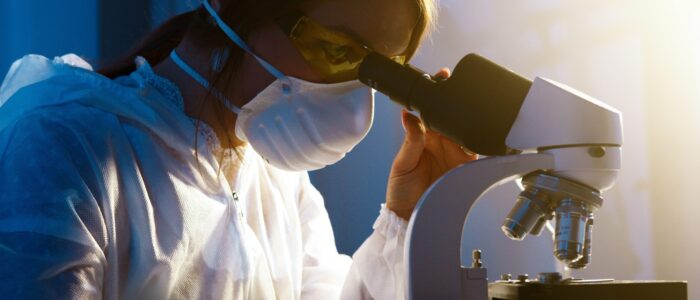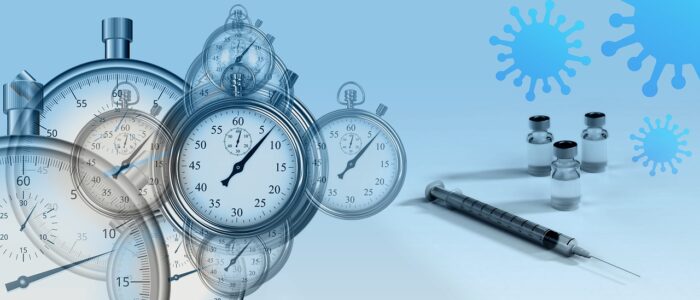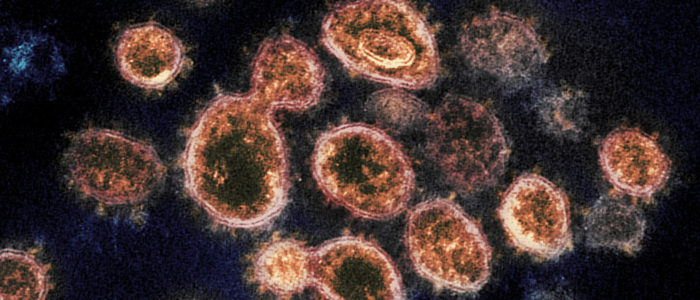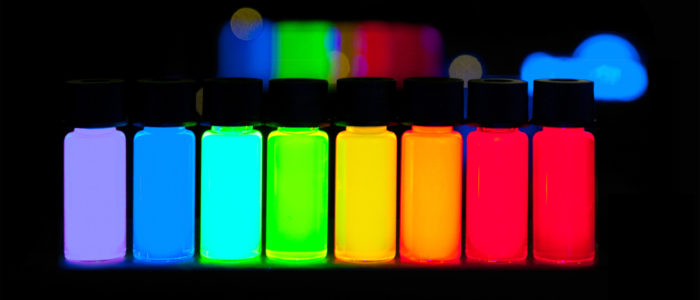You already know exactly what this article is about.
Schools are closed. Offices across the United States are rapidly shutting down business. The market has tanked as economic productivity screeches to a halt. San Francisco and many other parts of the country have issued a “shelter-in-place” policy. There isn’t a single roll of toilet paper to be found for miles.
SARS-CoV-2, more popularly referred to as simply “COVID-19” or “the coronavirus,” has left an indisputable mark on society. No matter how big of a “threat” you may think this virus is, for any event to make the world just completely stop is incredibly rare. People will mention this event in the same breath as 9/11 or the Great Depression as a generation-defining event. And yet, we still have Spring Break-ers headed to Florida, as if nothing at all is happening in the world around them.
Needless to say, society at large has had varying responses when presented with this new viral threat. Some, emboldened by claims that “it’s just a flu” and “the virus only affects the old and the immunocompromised,” have attempted to continue their lives and routines as normal. Others have let their fear of the new threat rule them and completely shut down as productive members of society. Others, still, have channeled their fear into xenophobia, lashing out at Chinese Americans in their community. All of these responses are destructive.
The CDC has published an excellent set of guidelines on how to operate your life in the wake of this disaster, and we as an organization implore you to continue to heed their advice in this time. However, we reason that some of the off-the-mark behaviors we describe are fueled by misinformation. So, just for fun, we wanted to go over some of the more common rumors that we have heard about the novel coronavirus in sort of a “fact or fiction” format. We hope you find this informative! As always, remember to ask us in the comments if you have specific questions that we did not address.
Remember: we as a society will get through this. Let’s all stay level-headed and band together to overcome these trying times!

Let's Talk Corona!
Here are 10 very common assertions about coronavirus that the Distilling Science team has heard spread via word-of-mouth or on social media. According to the rapidly expanding literature on coronavirus, some are true, and some are not. If you think we got one of these wrong, feel free to send us your source as proof! Let’s begin!
(1) The virus only affects the old or the immunocompromised
Rating: Mostly False.
The claim that corona-induced complications are severe only in the elderly and the immunocompromised has emboldened many younger citizens to continue their routines as normal. This attitude is incredibly destructive, both to the young people in question and to the at-risk members of society. First of all, social isolation is the best way to limit the spread of corona and keep our at-risk populations safe. The Washington Post has a great article on why social isolation is being purported as a method of choice by the CDC. This is the best strategy to keep our grandparents and our immunocompromised friends from avoidable and fatal illnesses, as well as keeping our hospitals operational. And if altruism just isn’t an effective motivator for you, maybe selfishness will do the trick. 20% of all corona-related hospital visits were for patients between 20 and 44 [1] Just because you are young does not mean you are invincible or immune to consequence. Coronavirus is a crisis, and as members of a society we all have a responsibility. Stay indoors as much as you can.

(2) The virus is man-made.
Rating: False.
Coronavirus is zoonotic, meaning it was originally transferred from animals. According to Dr. Kristian Anderson, an assistant professor at Scripps University in the United States, the molecular structure of the virus correlates nicely with similar viruses that commonly circulate in bats. There is no evidence whatsoever of any genetic tampering in a laboratory. Hence, the virus is a consequence of natural selection [2]. Actually, coronaviruses are quite common in birds and other species and were well known before this epidemic. They are called coronaviruses due to the many proteins that surround them, forming a wreath-like coating that resembles a solar “corona.”
It is difficult to know whether the virus entered humans in its current pathogenic state or whether they evolved from within humans from a more latent form. But we can feel assured that no one is sitting in a secret bunker playing a demonic game of Plague with the actual human populace. For some more info on the molecular structure and the spike-protein that allows the virus to enter human cells, check out this article!

(3) There is more than one strain of the virus.
Rating: True.
Viruses are always mutating. Every time a coronavirus divides, about 6 random genetic mutations occur [3]. The new coronavirus is no different and mutates quite rapidly. A small study of 103 cases near the beginning of the outbreak found two strains, the “S” strain and the “L” strain [4]. These two strains showed the same symptoms, and one strain is not significantly more deadly than the other. However, as the pandemic continues the genetic diversity of the virus is bound to groow. This genetic diversity can make coronavirus much more difficult to cure. Scientists will need to find a molecular target on the virus that is exhibited by all strains in order for the cure to be effective.
(4) The virus can survive on metal and other surfaces for up to two days.
Rating: True.
The virus is most stable on plastic and stainless steel, on which it retains viability for 48 hours. Copper surfaces are somewhat self-disinfecting and are clean of virus after 4 hours. Cardboard lies somewhere in the middle. The coronavirus can last about 24 hours on cardboard surfaces [5]. Wash your hands after touching lots of metal surfaces!

(5) The virus is neuroinvasive and can have neurological consequences.
Rating: Potentially true.
This is one of the scariest parts to me. We are dealing with an unknown entity and we don’t know what actions these tiny nano-invaders will take inside our bodies. The virology community has recently come to suspect that neurotropism, or the invasion of the nervous system by the virus, is primarily responsible for the respiratory distress caused by similar diseases in other animals [6]. Other coronaviruses can traverse the blood brain barrier and travel along synapses, killing neurons and wreaking havoc in the medullary cardiorespiratory centers of the brain. Generally, in biology, structure indicates function; hence, the similar molecular structure may indicate a similar behavior in SARS-CoV-2. The potentially neuroactive behaviors of the virus are something researchers will need to keep in mind when searching for a cure.
(6) You can cure the virus by ingesting silver/alcohol.
Rating: Super false.

In biological research, we commonly use ethanol to sanitize our workspace of bacteria and viral particles. More specifically, we use 70% ethanol in water. Hypothetical question: if your blood was 70% ethanol by volume, do you think you’d have the BAC to drive home tonight?
Here’s a hint: the legal BAC is 0.08 in my state. That’s 0.08% alcohol by volume. A BAC of 70 is, laughably, a few orders of magnitude above a lethal dose. Silver follows a similar story – you’d poison yourself before you did any good against the virus.
Interestingly, a standard anti-malarial drug, hydroxychloroquine, is showing effectiveness at fighting coronavirus when combined with an antibiotic (azithromycin). However, the use of this drug cocktail is currently in question by the American FDA. Most of the literature in favor of using hydroxychloroquine is sourced from one French scientist, Didier Raoult [5-6], who has championed azithromycin for the treatment of viral diseases even before the onset of this epidemic [7]. These off-target treatments brought much scorn from virologists at the time, which he notes in his recent publication [6]. While the results of his clinical trial are quite promising, caution is always imperative when evaluating any new drug combination. It is the scientific community’s job to properly vet any potential drug cocktail before recommending its use by the general public. In fact, hydroxychloroquine and azithromycin are known to cause ventricular arrhythmias and other heart complications when taken together. Disastrous and fatal consequences could follow if treatments are not properly vetted.
For more on this new drug cocktail, check out this piece from the New York Times.
(7) You should wear a mask everywhere you go to avoid getting/transmitting the virus.
Rating: Mostly false.
According to guidelines from the World Health Organization, you should only wear a mask if you are treating or caring for an ill patient. If you find yourself sick, you should not, under any circumstances, be out and about. Sit at home and wait for the sickness to pass (unless, of course, you feel you need medical attention). If your symptoms worsen, call ahead at a hospital to receive medical counsel before arriving.
If you don’t have a reason to purchase a mask, leave them for the medical professionals facing many COVID-19 cases per day. My best friend works in a hospital setting, and they are already short on masks and other personal protective equipment. This gear is already being rationed in most Georgia hospitals. Please be conscious and let’s get through this together.

(8) Soap and hand sanitizer do not kill the coronavirus because those are antibacterial, not antiviral.
Rating: Very false.
Virus particles are comprised of ribonucleic acid (RNA) enclosed by a lipid membrane dotted with proteins. Hydrophobic soaps intermingle with the viral lipid membrane and pull it apart, even more effectively than hand sanitizers. Hand sanitizers kill virus particles with the toxic effects of alcohol and other disinfectants. No antibacterials are necessary. Water alone won’t do the trick. For the effectiveness of other disinfecting strategies, check out this handy guide from the World Health Organization.
(9) Ibuprofen worsens symptoms.
Rating: Likely false.
This rumor has actually sparked intensive debate. An initial study published in The Lancet [10] originally asserted that angiotensin-converting enzyme (ACE) inhibitors, commonly used in the treatment of heart disease, make people more susceptible to the coronavirus. The rationale behind this was that such medications increase the expression of ACE2, a cell surface protein that the coronavirus binds to in order to attack human cells. Mistakenly, this paper also asserted that ibuprofen increases the expression of ACE2 [11].
Even though the authors did not cite any sources for this claim, it was taken quite seriously by the general public. The French prime minister has tweeted not to take ibuprofen if you feel you have come down with coronavirus. A famous Irish physician named Garrett A. FitzGerald recently published an article in Science explaining that there is no evidence of any symptom worsening when treatments are combined with Ibuprofen [12]. His conclusions are backed by statements from the FDA and the WHO. The guidelines currently published by WHO advise individuals to ask their doctor before changing their ibuprofen consumption habits. However, they insist that no reliable evidence has shown a harmful effect using ibuprofen while infected with coronavirus.
In summary, if you are taking ibuprofen or another NSAID for a chronic condition, do not stop your consumption out of fear of the coronavirus. If you are taking heart medication or another ACE inhibitor, consult your doctor as to how you should proceed. The consequences of stopping medication may be worse than a marginally increased chance for coronavirus. If you end up getting coronavirus, avoid chugging ibuprofen – there is no clinical evidence that it helps with the symptoms, anyway [12].

(10) We are close to a vaccine!
Rating: False, but with a side of true.
Multiple vaccines and other treatments have entered clinical trials. The FDA and the American government are also working to remove regulatory barriers and speed up clinical trials. However, it’s still unlikely that we see a vaccine for the coronavirus put in place until at least 2021. Pushing a vaccine out in 18 months would be historic. Barring an incredible breakthrough that speeds production, we should assume that we’ll be without a vaccine for that long. Luckily, it’s likely that a combination of built-up immunity, societal adjustments, and other medical advancements will slow the pace of the virus long before then.

Conclusion
As I write this, 13,000 people have died from COVID-19. This is a real, modern public health crisis, and we all need to do our part in order to save lives. But at the same time, there’s no need to panic! Ideally, we should all be following the WHO and CDC’s guidelines while being our most productive selves working at home. Sustained panic will inevitably deepen the long-term damage to society.
It’s okay to feel a little off in a time like this. Everyone does. You are not alone. Lean on your support networks, and we can get through this together. If there’s anything that I, personally, can do to help you through this time, please let me know! Especially if it involves answering any more questions about the disease. But in the meantime, let’s take it one day at a time and keep trying to make society great in all the ways that we usually do.
Stay safe out there!
References
1. Center for Disease Control. “Severe Outcomes Among Patients with Coronavirus Disease 2019 (COVID-19) — United States, February 12–March 16, 2020.” Morbidity & Mortality Weekly Report. https://www.cdc.gov/mmwr/volumes/69/wr/mm6912e2.htm?s_cid=mm6912e2_w
2. Kristian G. Andersen, Andrew Rambaut, W. Ian Lipkin, Edward C. Holmes, Robert F. Garry. “The proximal origin of SARS-CoV-2.” Nature Medicine, 2020; https://www.nature.com/articles/s41591-020-0820-9
3. Jones, I. M. et al. “A Fusion Peptide in the Spike Protein of MERS Coronavirus.” Viruses 2019, 11(9) 825. https://www.ncbi.nlm.nih.gov/pubmed/31491938
4. Tang, X. et al. “On the origin and continuing evolution of SARS-CoV-2.” National Science Review, 2020 (accepted manuscript). https://academic.oup.com/nsr/advance-article/doi/10.1093/nsr/nwaa036/5775463
5. Doremalen, N. “Aerosol and Surface Stability of SARS-CoV-2 as Compared with SARS-CoV-1.” New England Journal of Medicine, 2020. https://www.nejm.org/doi/full/10.1056/NEJMc2004973
6. Raoult, D. et al. “Chloroquine and hydroxychloroquine as available weapons to fight COVID-19.” Journal of Antimicrobial Agents, 2020. https://www.ncbi.nlm.nih.gov/pubmed/32145363
7. Raoult, D. et al. “Hydroxychloroquine and azithromycine as a treatment of COVID-19: Results of an Open-Label Non-Randomized Clinical Trial.” International Journal of Antimicrobial Agents, 2020. https://www.mediterranee-infection.com/wp-content/uploads/2020/03/Hydroxychloroquine_final_DOI_IJAA.pdf
8. Raoult D, et al. “Azithromycin inhibits the replication of Zika virus.” J Antivir Antiretrovir 2018. https://www.longdom.org/open-access/azithromycin-inhibits-the-replication-of-zika-virus-1948-5964-1000173.pdf
9. Hashikawa, T. et al. “The neuroinvasive potential of SARS-CoV2 may play a role in the respiratory failure of COVID-19 patients.” Journal of Medical Virology, 2020. https://www.ncbi.nlm.nih.gov/pubmed/32104915
10. Roth, M. et al. “Are patients with hypertension and diabetes mellitus at increased risk for COVID-19 infection?” The Lancet, 2020. https://www.thelancet.com/pdfs/journals/lanres/PIIS2213-2600(20)30116-8.pdf
11. “No evidence to support link between ibuprofen and COVID-19, experts say.” C&EN, 2020. https://cen.acs.org/pharmaceuticals/evidence-support-link-between-ibuprofen/98/web/2020/03
12. FitzGerald, G. A. “Misguided Drug Advice for COVID-19.” Science, 2020. https://science.sciencemag.org/content/early/2020/03/19/science.abb8034






This is a lot of effort to clearify things to us, apprentaly i was wrong about some of the questions.
Good job!
Did you go back home? Or are you still in Houston?
Thanks, Yigao! I’m currently at home with my family. I hope to be able to return to Houston soon, though!
Great article! Well-sourced, concise, and carefully articulated. Keep up the good work.
Thank you for this well-written article I ALMOST understood everything. You are a phenomenally smart young man!!!!
Great article Jacob. Extremely cogent. Thanks for taking the time to sort through all the “noise” and put this together.
Great post! We will be linkiing to this particularly great article on our website.
Keep up the good writing.